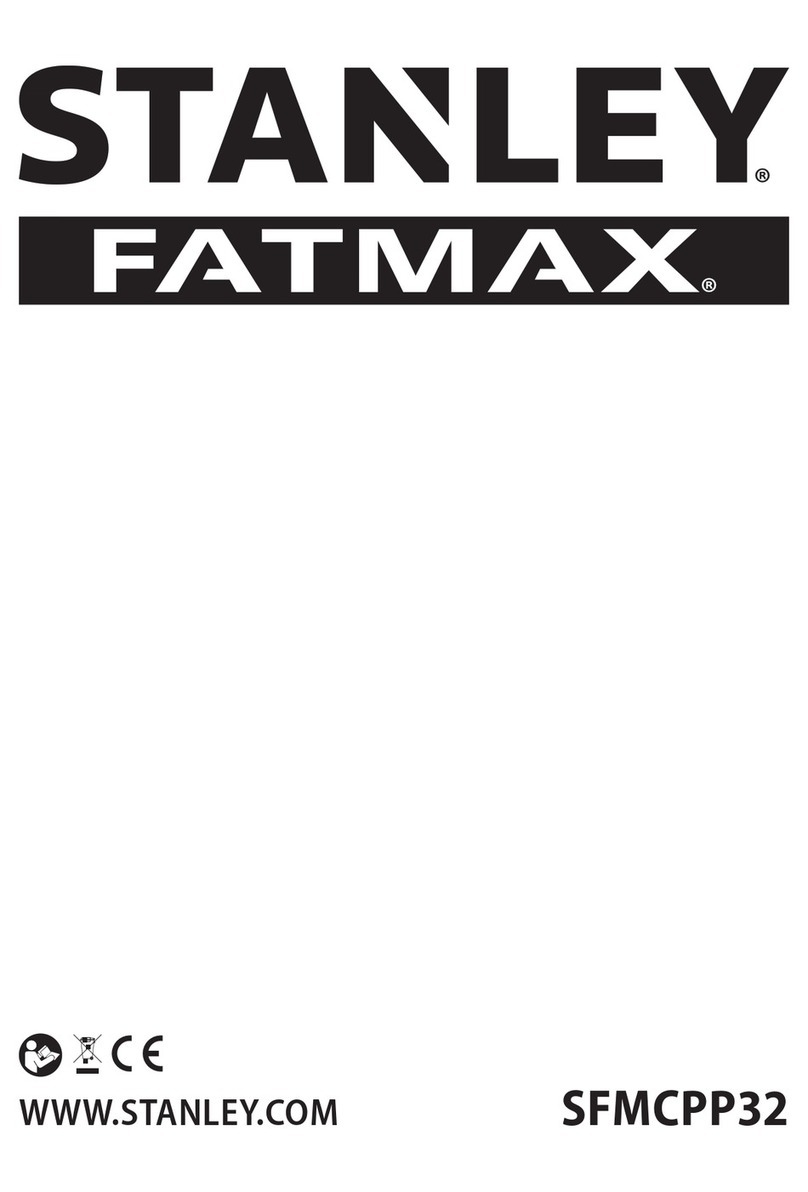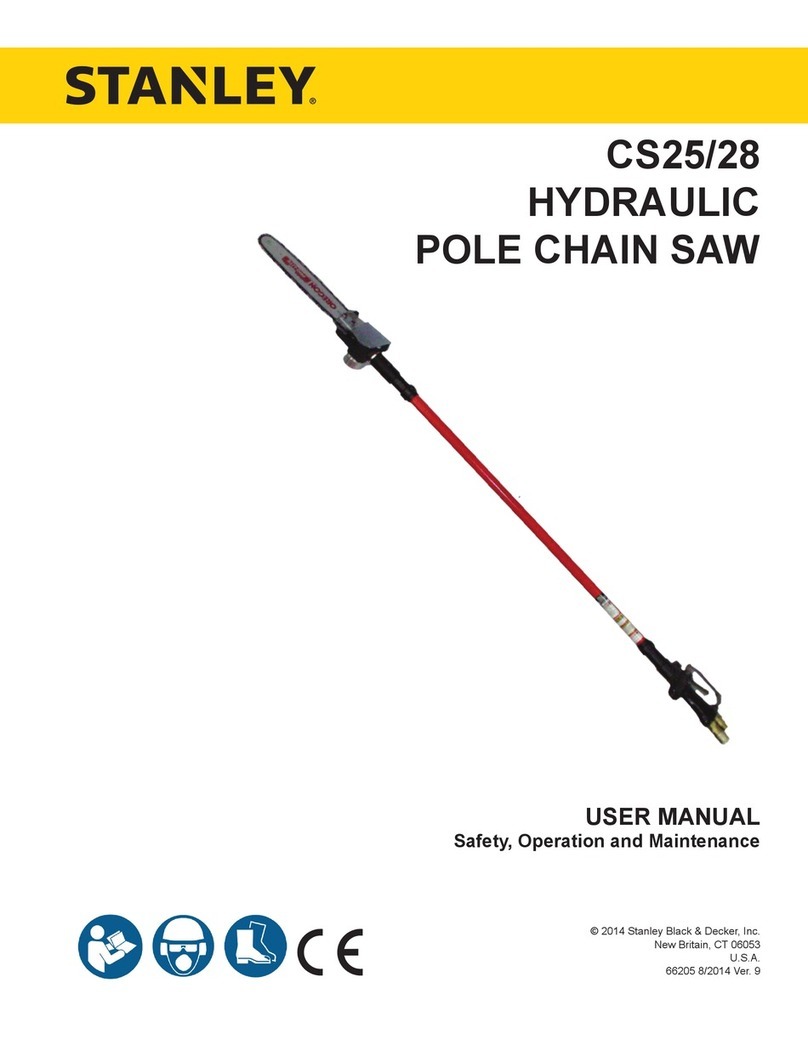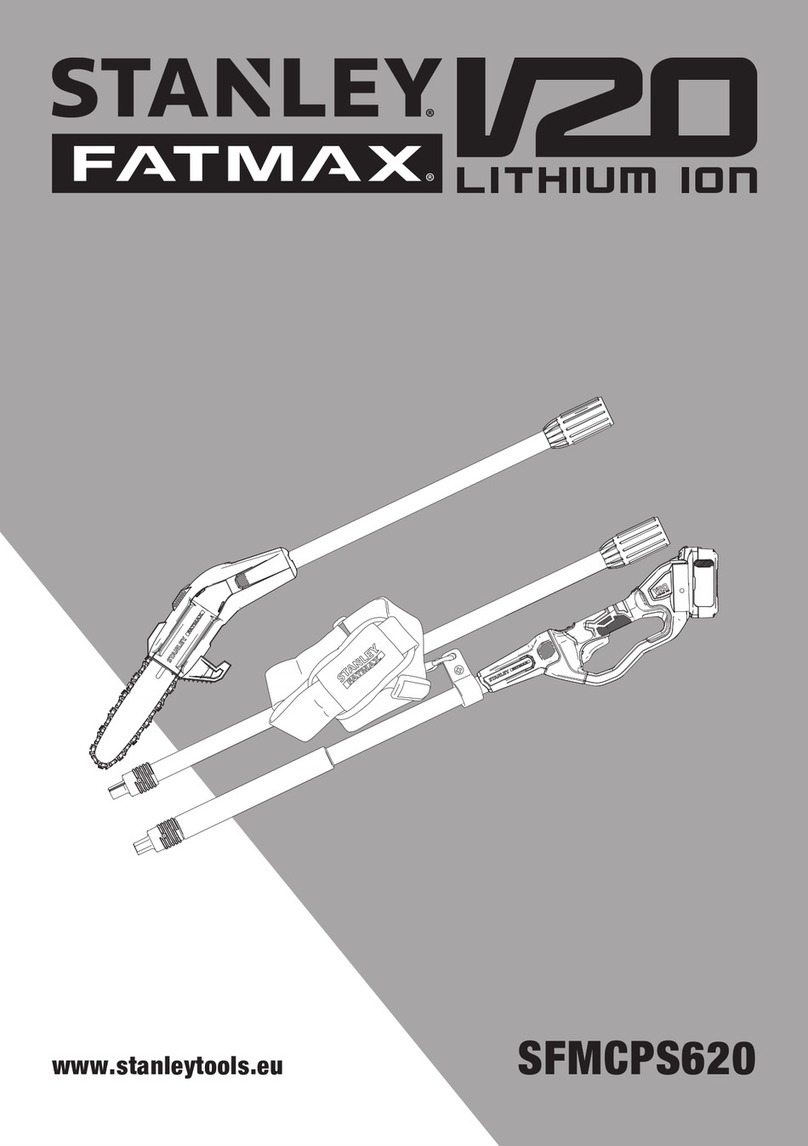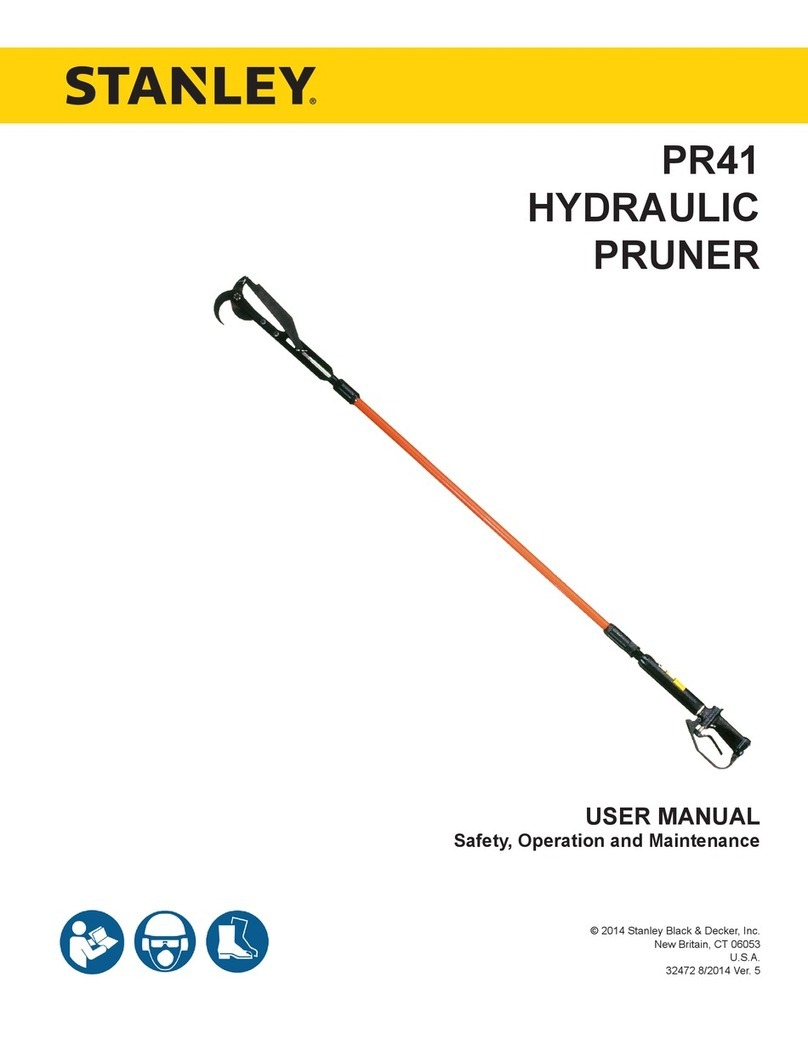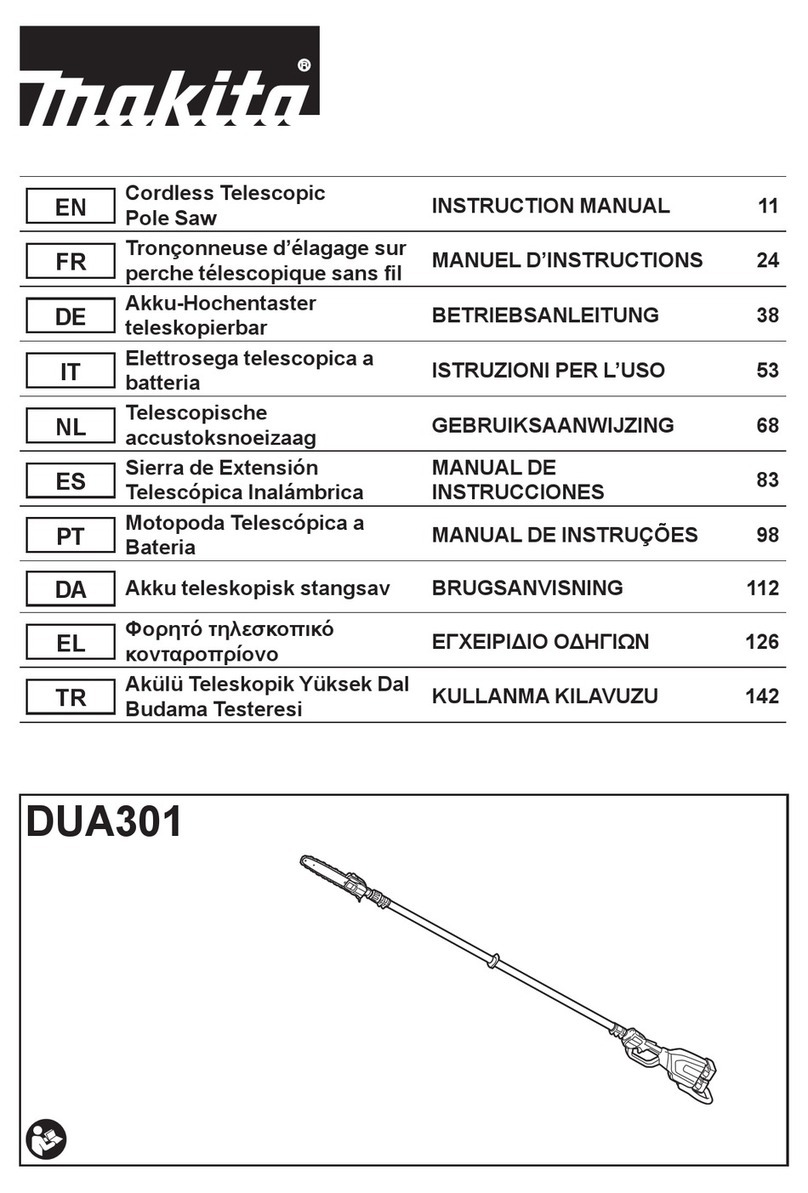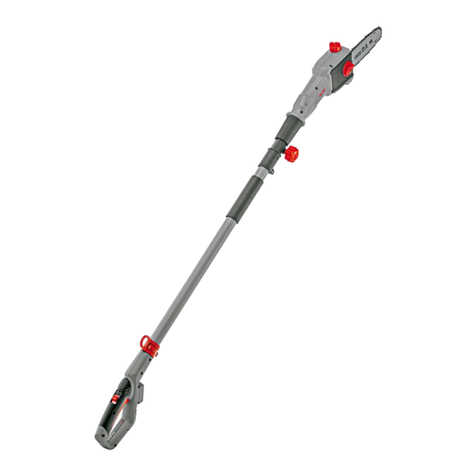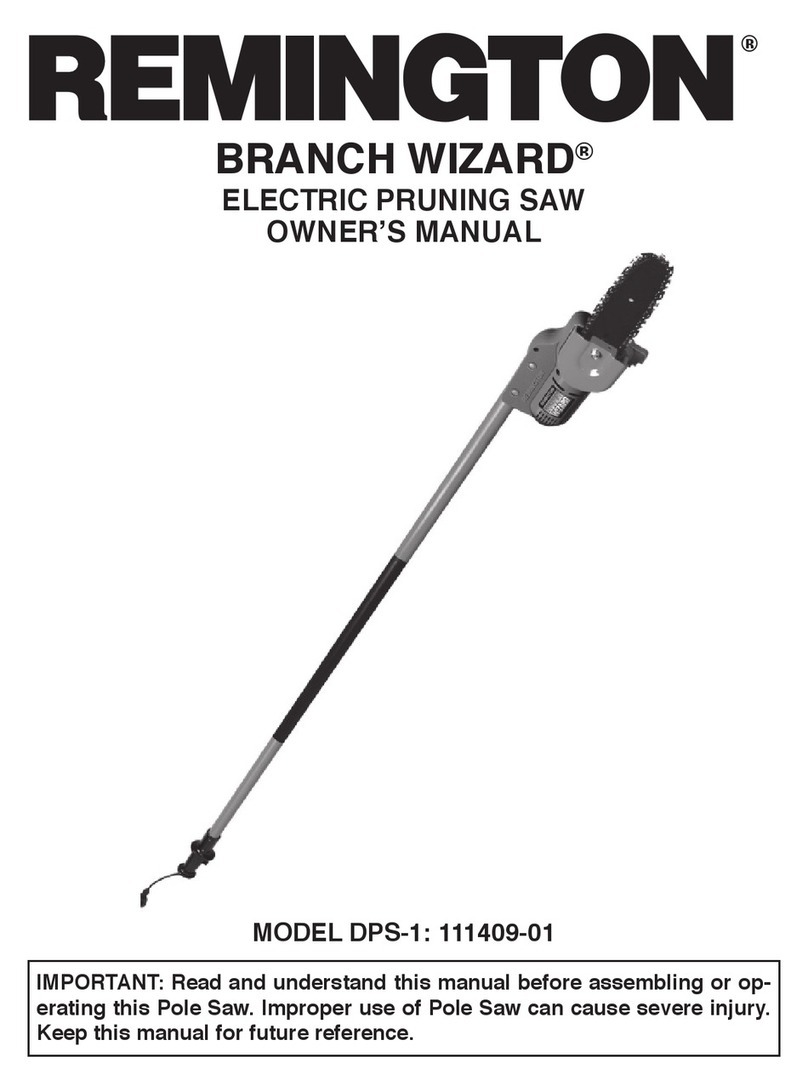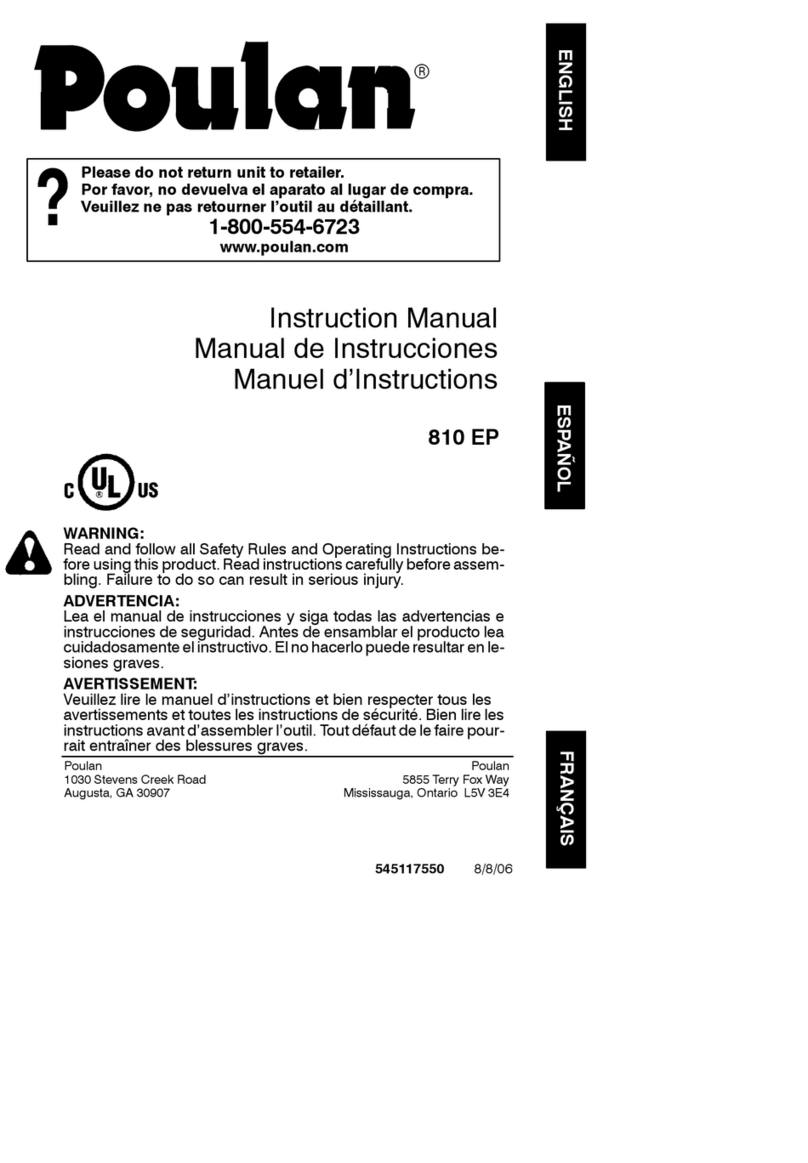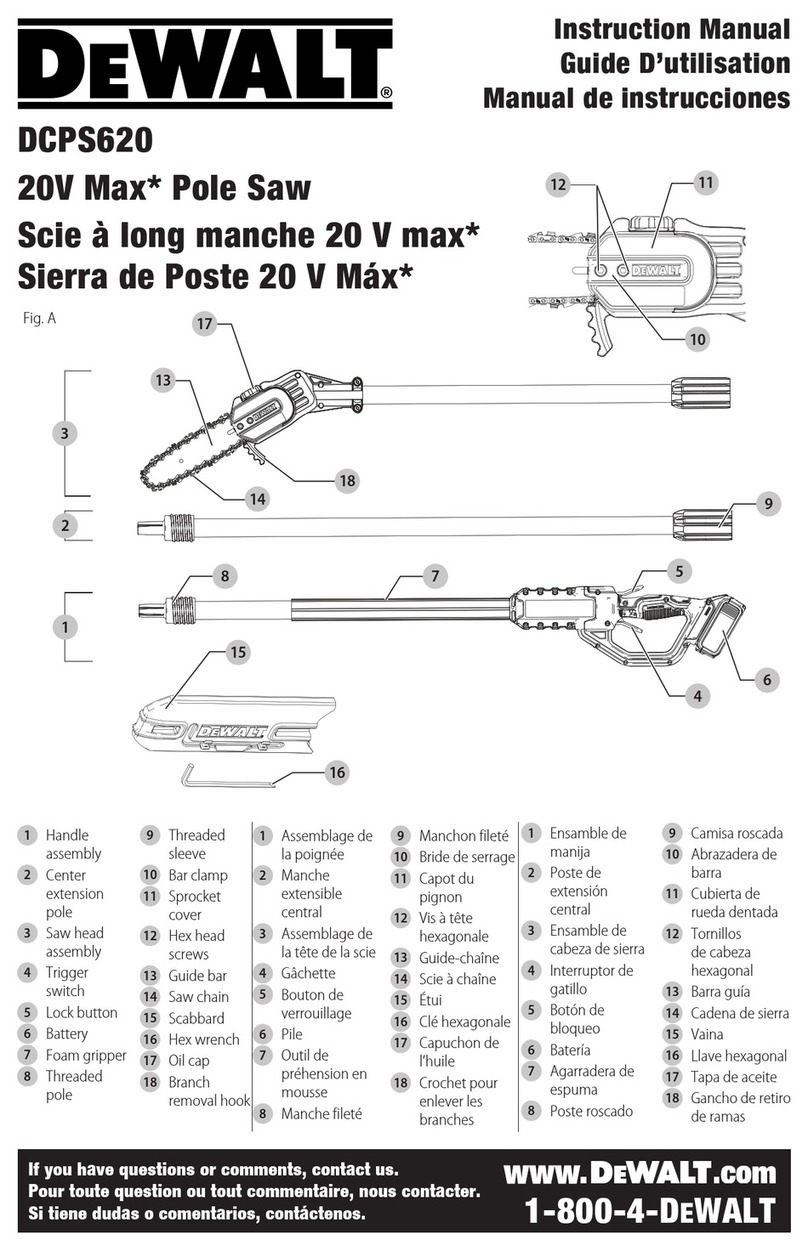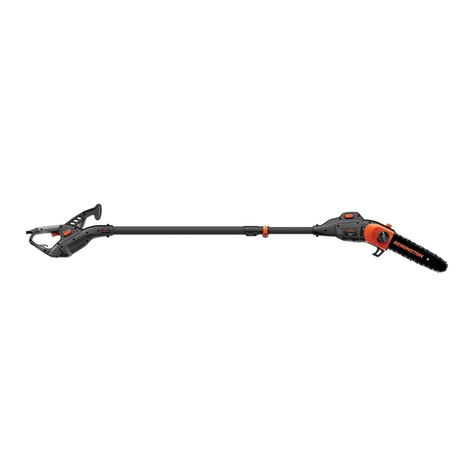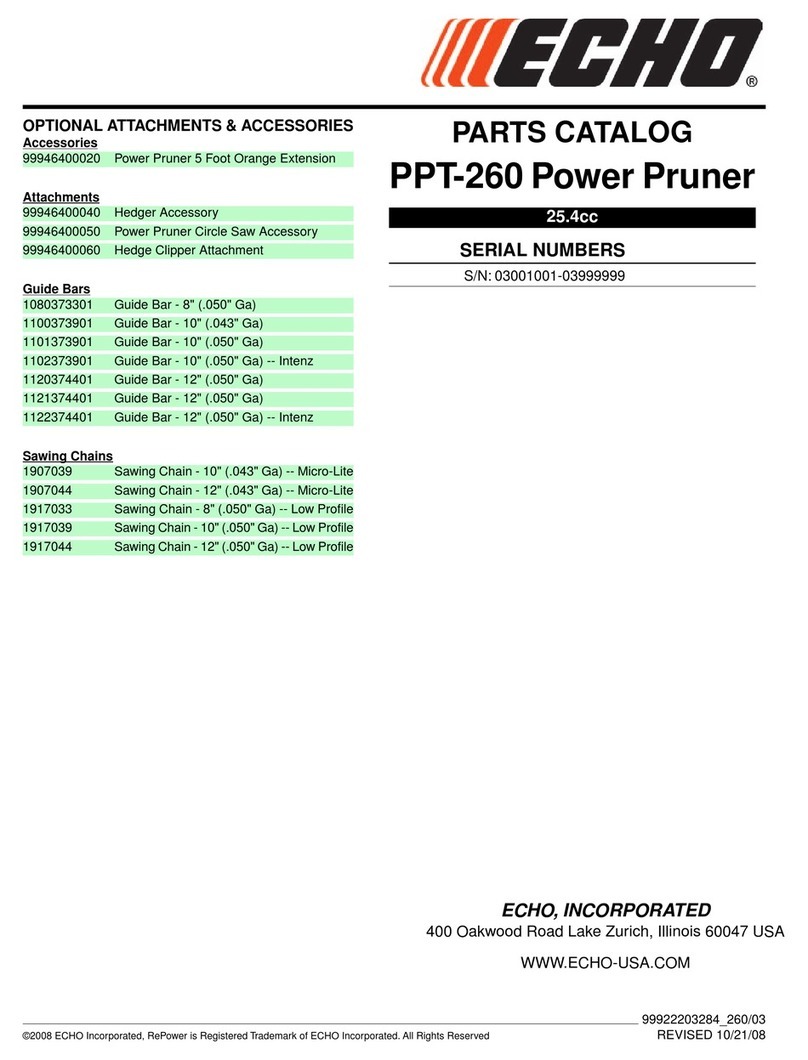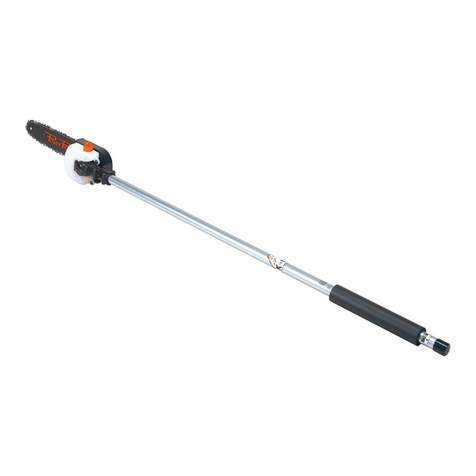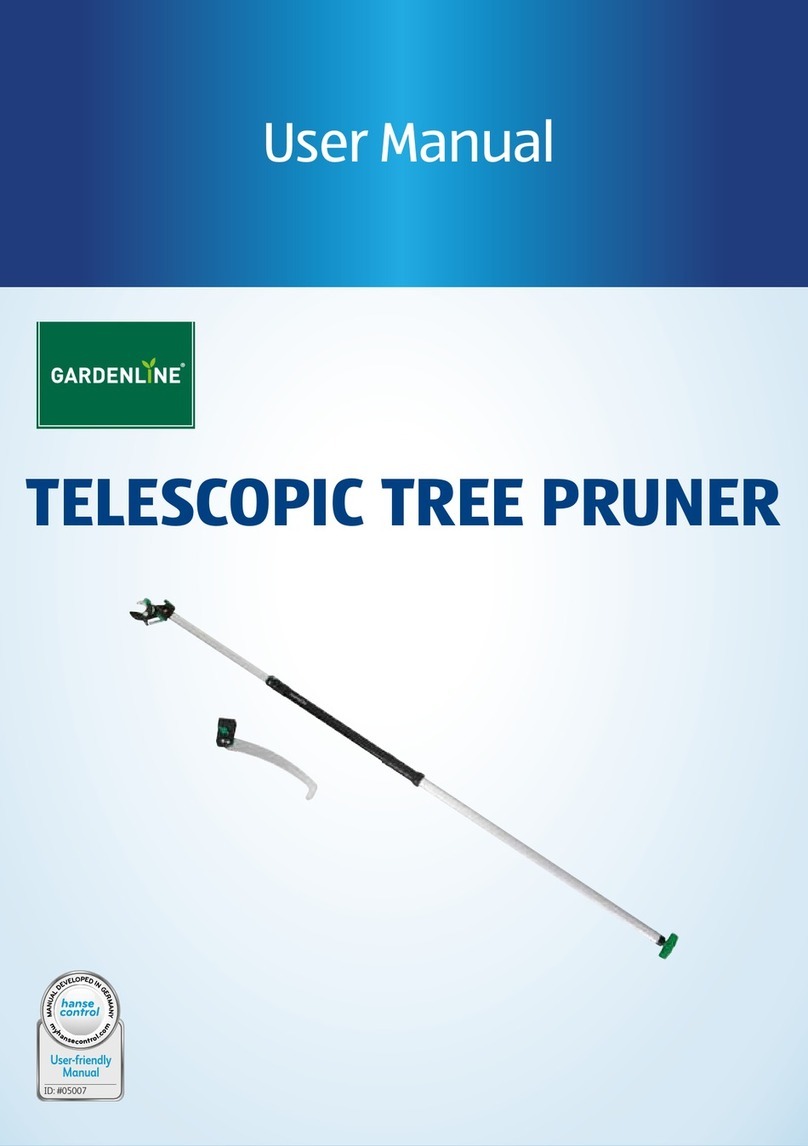
3
For the nearest authorized and certified dealer, call Stanley Hydraulic Tools at the number listed on the
back of this manual and ask for a Customer Service Representative.
SERVICING THE STANLEY HYDRAULIC Pole Chain Saw. This manual contains safety, operation, and
routine maintenance instructions. Stanley Hydraulic Tools recommends that servicing of hydraulic tools,
other than routine maintenance, be performed by an authorized and certified dealer. Please read the fol-
lowing warning.
SERIOUS INJURY OR DEATH COULD RESULT FROM THE IM-
PROPER REPAIR OR SERVICE OF THIS TOOL.
REPAIRS AND / OR SERVICE TO THIS TOOL MUST ONLY BE
DONE BY AN AUTHORIZED AND CERTIFIED DEALER.
TABLE OF CONTENTS
CERTIFICATE OF CONFORMITY.............................................................................................................................................................4
SAFETY SYMBOLS...................................................................................................................................................................................5
SAFETY PRECAUTIONS...........................................................................................................................................................................6
ELECTRICAL HAZARDS...........................................................................................................................................................................8
TOOL STICKERS & TAGS.......................................................................................................................................................................10
HYDRAULIC HOSE REQUIREMENTS....................................................................................................................................................11
HTMA REQUIREMENTS..........................................................................................................................................................................12
OPERATION.............................................................................................................................................................................................13
PREOPERATION PROCEDURES .....................................................................................................................................................13
CHECK POWER SOURCE.................................................................................................................................................................13
CHECK TOOL.....................................................................................................................................................................................13
CHECK TRIGGER MECHANISM.......................................................................................................................................................13
SETTING THE DUAL SPOOL FOR OPERATION..............................................................................................................................13
SETTING FOR OPEN-CENTER (OC) OR CLOSED-CENTER (CC) OPERATION...........................................................................13
TO DISABLE DUAL SPOOL OPERATION AND CONVERT TO OC ONLY OPERATION..................................................................13
TO DISABLE DUAL SPOOL OPERATION AND CONVERT TO CC ONLY OPERATION..................................................................13
CONNECTING HOSES ......................................................................................................................................................................13
TOOL OPERATION.............................................................................................................................................................................14
CUTTING TIPS...................................................................................................................................................................................14
FELLING OR TOPPING......................................................................................................................................................................14
NOTCHING OR UNDERCUTTING.....................................................................................................................................................14
FELLING OR BACK CUT....................................................................................................................................................................14
LOGS/LIMBS WITH PRESSURE ON BOTTOM.................................................................................................................................14
PRUNING & TRIMMING.....................................................................................................................................................................14
TOPPING/LOWERING LIMBS............................................................................................................................................................15
LIMING AND BUCKING......................................................................................................................................................................15
COLD WEATHER OPERATION .........................................................................................................................................................15
EQUIPMENT PROTECTION & CARE.....................................................................................................................................................17
TROUBLESHOOTING .............................................................................................................................................................................18
SPECIFICATIONS....................................................................................................................................................................................19
ACCESSORIES........................................................................................................................................................................................19
SERVICE TOOLS.....................................................................................................................................................................................19
CS25/28 PARTS ILLUSTRATION ............................................................................................................................................................20
CS25/28 PARTS LIST..............................................................................................................................................................................21
WARRANTY.............................................................................................................................................................................................22


